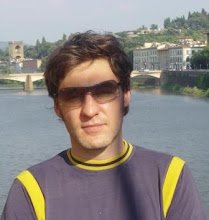 |
| Is this science and is it valid: What would Thomas Hobbes think? |
In Hobbes view, Boyle’s experimental solution to the problem of order was not possible; it was not effective; and it was dangerous. (Shapin and Schaffer 1985: 80-81).
In discussing the methods of climate science, the use of models and the process of simulation are often mentioned as either a key strength or key weakness of the science. While climate models receive a great deal of attention (and funding), they are generally a very marginal part of the science – much more time is spent examining actual data, identifying relevant data sources, developing statistical methods and making sure that observations and calculations are contextualised in terms of other data sets. The fact that some statistical methods assessing correlations in actual data is also called modelling is confusion.
By modelling, I will refer here only to simulation using models, a type of experimentation. I will contrast modelling with the statistical analysis of actual data to determine specific correlations that does not depend on extrapolation or simulation. While examples of either approach can be contested, the issue I am concerned with here is the validity of simulation and experimentation using models in climate science. This issue is fundamental if we are to understand the criteria such modelling must meet if it is to follow the scientific method.
The scientific method seems to be one of the more straightforward issues in climate science - we all know what the scientific method is, right? We agree with the Oxford English Dictionary that it is “a method of procedure that has characterized natural science since the 17th century, consisting in systematic observation, measurement, and experiment, and the formulation, testing, and modification of hypotheses” I assume. But let's go back to the 17th Century for a moment to understand the emergence of the concept. The status of experimentation was the source of an important dispute between Robert Boyle and Thomas Hobbes during the 1660s and 1670s. The disagreement between Boyle and Hobbes is analysed in great detail by Steven Shapin and Simon Schaffer in their book Leviathan and the Air-Pump (Shapin and Schaffer 1985). The book examines, among many its themes, the boundaries and methods of science in relation to questions of political philosophy. This is a good place to start because there were two competing approaches to “the” scientific method, best expressed in terms of the relationship between scientist Robert Boyle and the political philosopher Thomas Hobbes, or rather the science and political thought of Boyle and the political thought and science of Hobbes. Hobbes and Boyle are key figures in the Enlightenment tradition, their approach to method being that of the mechanistic philosophy while their epistemology developed along similar lines within the rationalist tradition, but where they differ is in the status of experimentation itself.
